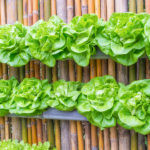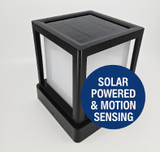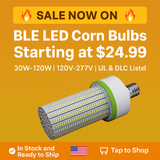Agriculture Experiments With 'Vertical Farming'
Anyone paying attention to the world-wide agricultural community right now can tell you that things are... getting weird. Frustrated farmers, high costs, record food demand, environmental factors and government regulations are all clashing to create a very uncertain time for farmers and food producers. Fortunately, we have the technology to attempt to make food production easier. One fascinating example of this is what's called 'vertical farming'.
Across the world, college students and massive corporations alike have experimented with a type of alternative farming that grows crops sustainably in an indoor space with high powered LED lighting. It uses no synthetic fertilizers, herbicides, or pesticides. Often, crops can hang in vertical troughs as they grow -- especially short, leafy crops like lettuce and spinach -- hence the name 'vertical farming'.
Smaller vertical farming projects have taken place in converted areas like trailers and shipping containers. Large-scale alternative agricultural projects can even take over whole warehouses. The warehouse lighting fixtures are replaced with special LEDs. These aren't your typical white solar parking lot lights or yard-illuminating LEDs. They're specially designed LEDs in the red and blue color spectrums, optimized for growing nutritionally complete plants even without proper sunshine.
One of the main issues with vertical farming? The energy use. LED lights do consume far less energy than traditional lighting. In fact, an LED bulb uses only about 15% of the energy a comparable halogen bulb would, and with 85% more light output to boot. That's why solar parking lot lighting, replacing neon signs with LED signs, and LED screens are all booming in popularity. But the large strings of LEDs used in vertical farming still need to be on up to 16 hours a day to make up for the plants' lack of sunlight, which consumes a lot of energy.
Vertical and small-space farming is so promising for small communities and rough climates to produce fresh, healthy produce, so it's disappointing that they aren't more widespread due to the potential costs. The good news? New advancements in LED technology are being tested and discovered all the time. Hopefully soon enough we'll be able to reduce the cost of running LEDs even further to facilitate big, world-altering projects like vertical farming.
Recent Posts
-
How Long Will Solar Powered Lighting Operate in the Rain?
How Solar Light Fixtures Can Run for 10 Rainy Days If you’ve ever wondered how a Commercial solar li …Jul 30th 2025 -
Spotlight - The IL-SPG54 Smart Solar Walkway Light: Where Performance Meets Simplicity
Introducing the IL-SPG54 Smart Solar Walkway Light: Where Performance Meets Simplicity When it comes …Jun 16th 2025 -
Corn Bulb Sale - While supplies last!
⚡ Limited Time Sale – BLE Series Corn Lamps Starting at $24.99! Stock up now while supplies last – p …Jun 11th 2025






